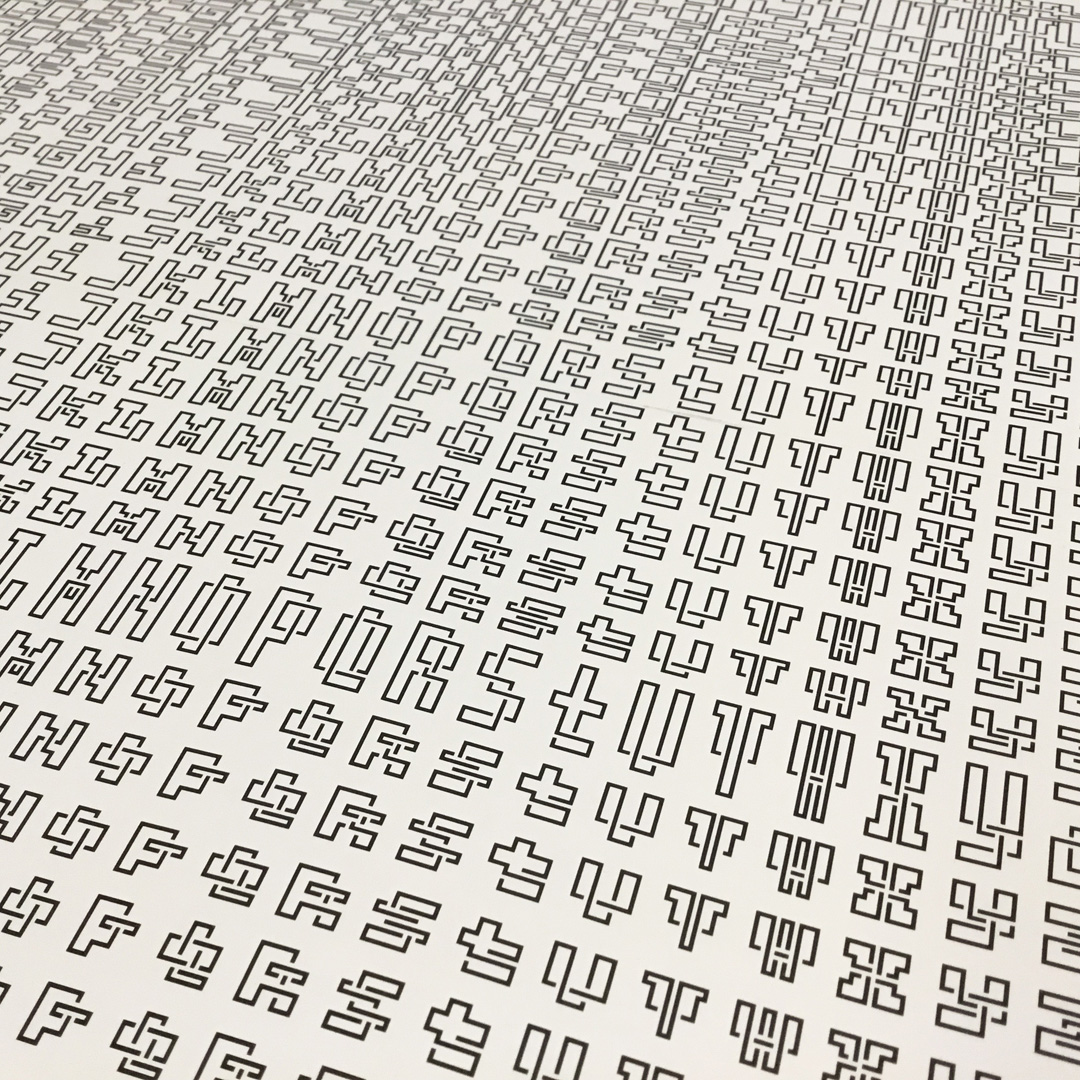
These printouts show some of the bitmap fonts used in my woven book objects. They are based on my earlier LoRes designs. By outlining and subtracting pixels I came upon the illusion of woven forms. 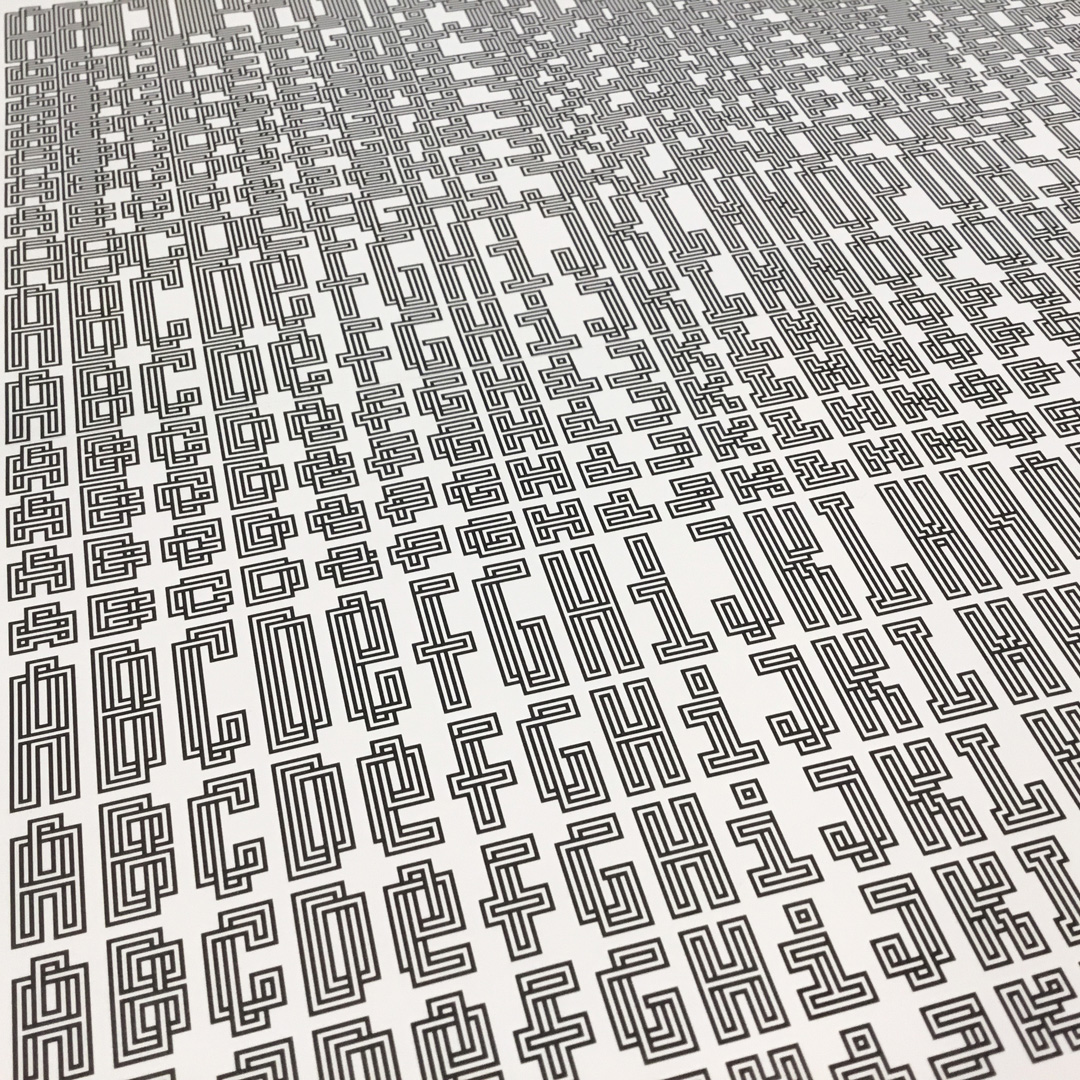
These are the double line bitmap fonts. For weaving larger size letters, which get a higher resolution from the weaving grid, I also made triple, quadruple and octuple lined variants, such as the large "A" shown on the cover of the first book. 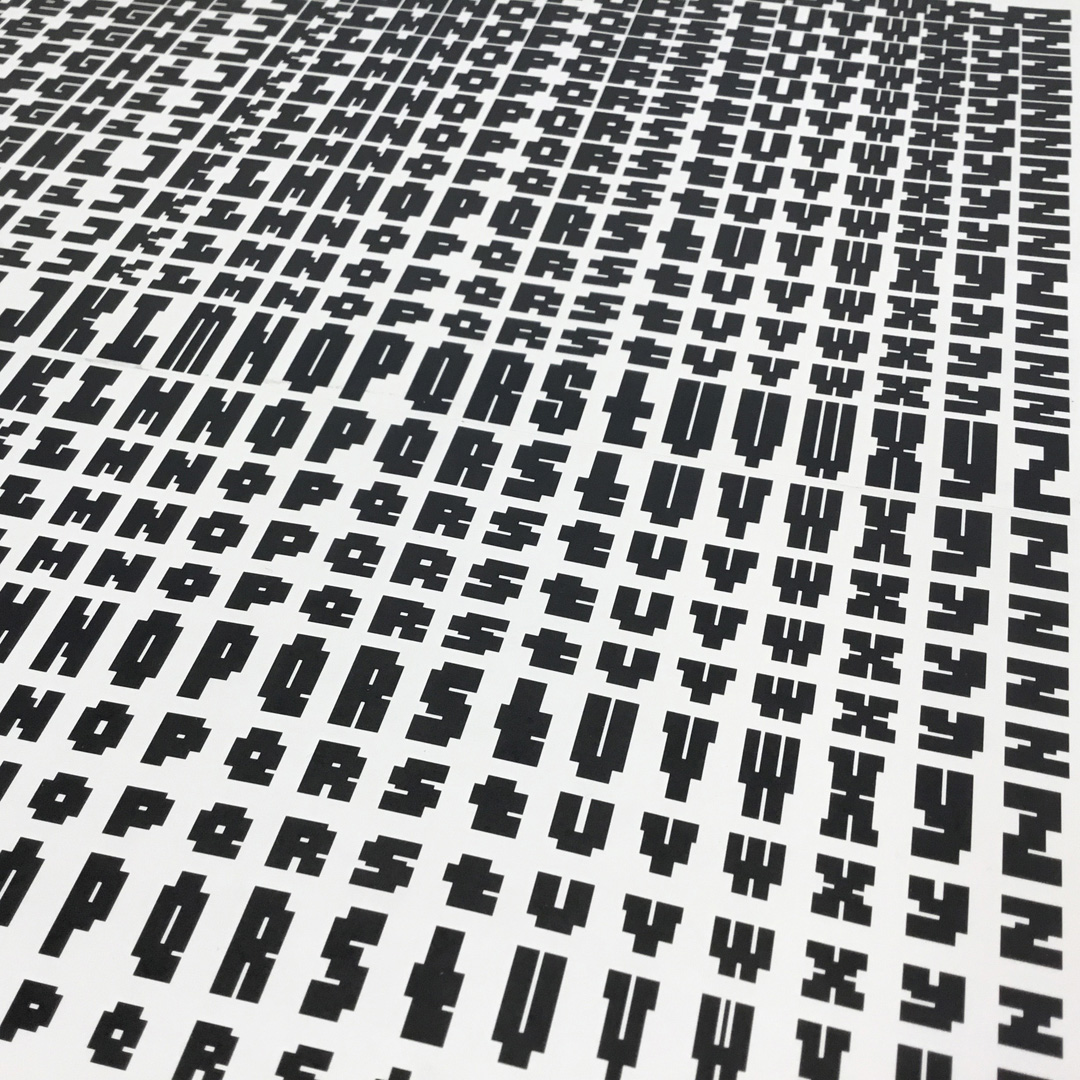
And these are the solid fonts. For each of the lined and solid variants I made an array of heights and widths to fit the weaving grid in various combinations. I found myself going back and forth between the layout compositions and the fonts. I would use a font in my layout, then start editing the layout bitmap, then go back and edit a font variant with those changes, and repeat. In the final layout, I would further edit details to finesse the particular letter pairing. That's the interplay between fonts and lettering. 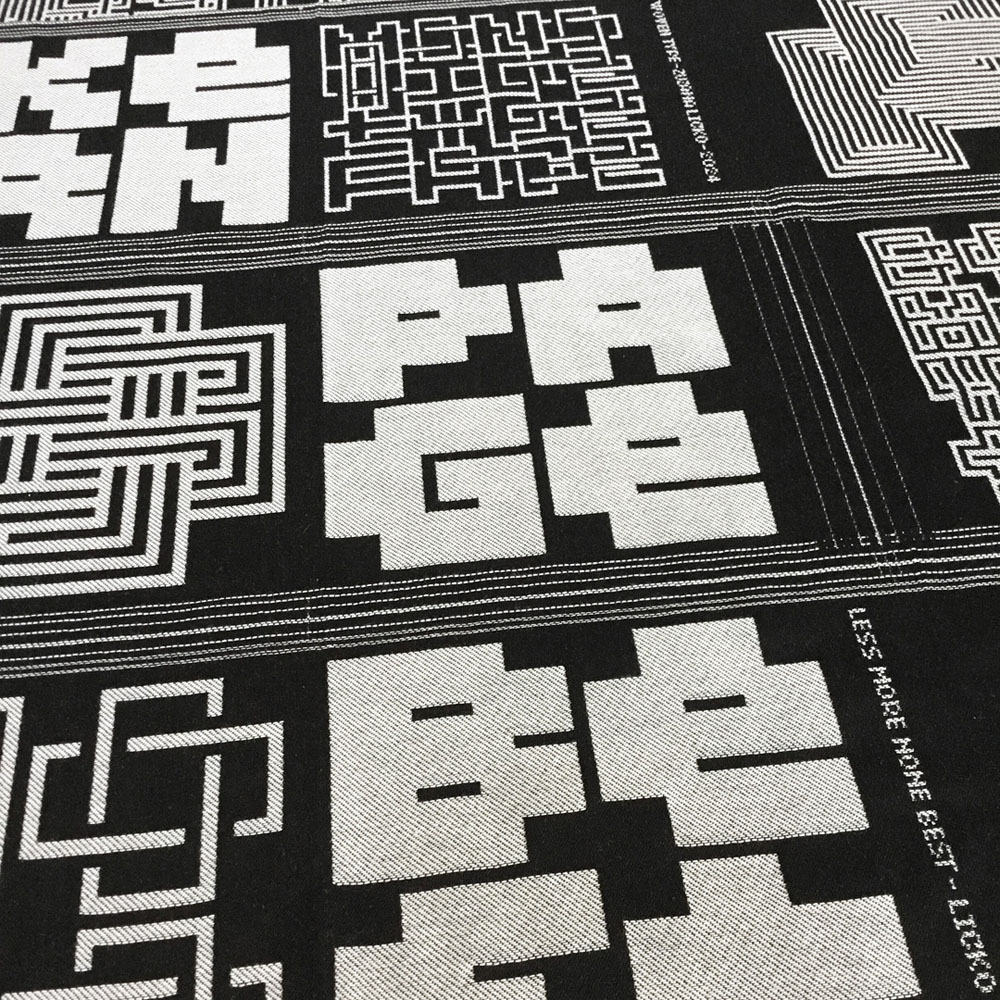
Detail of the woven fabric with the lettering. 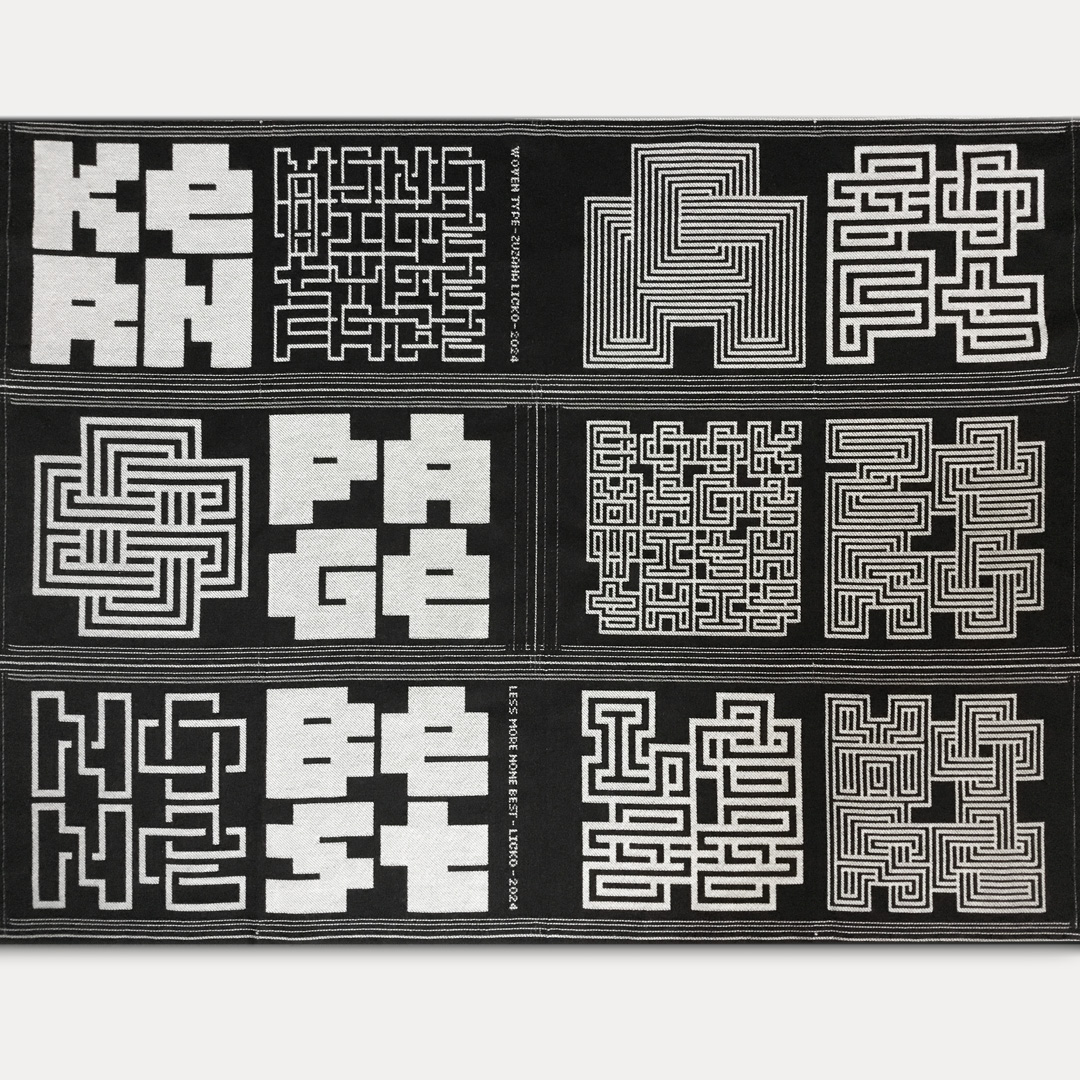
One yard of fabric with twelve pages, woven in printer spread layout. 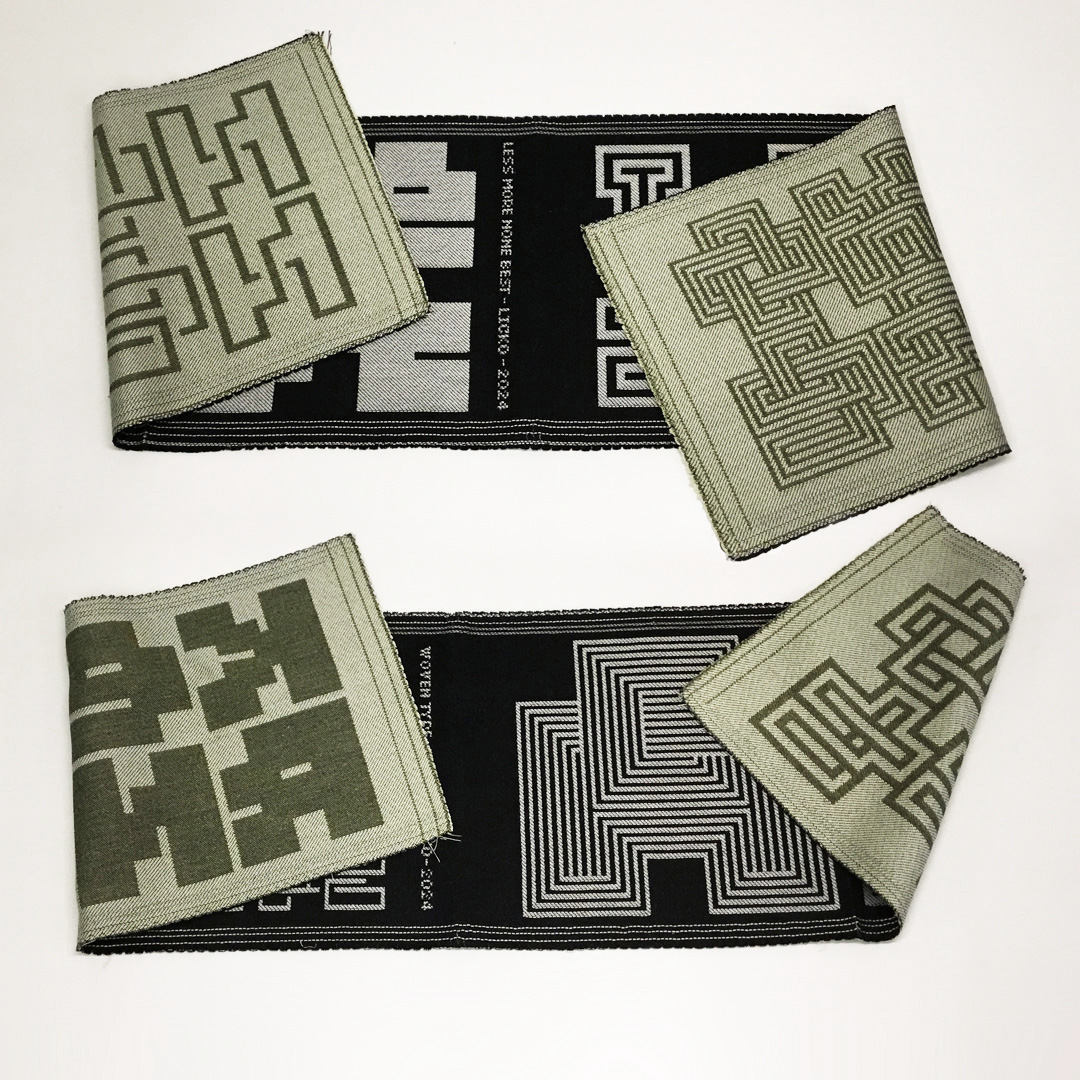
The signature strips are cut apart. The fabric will be fringed top and bottom, then folded over the side edges onto board, mounted with book binders glue. 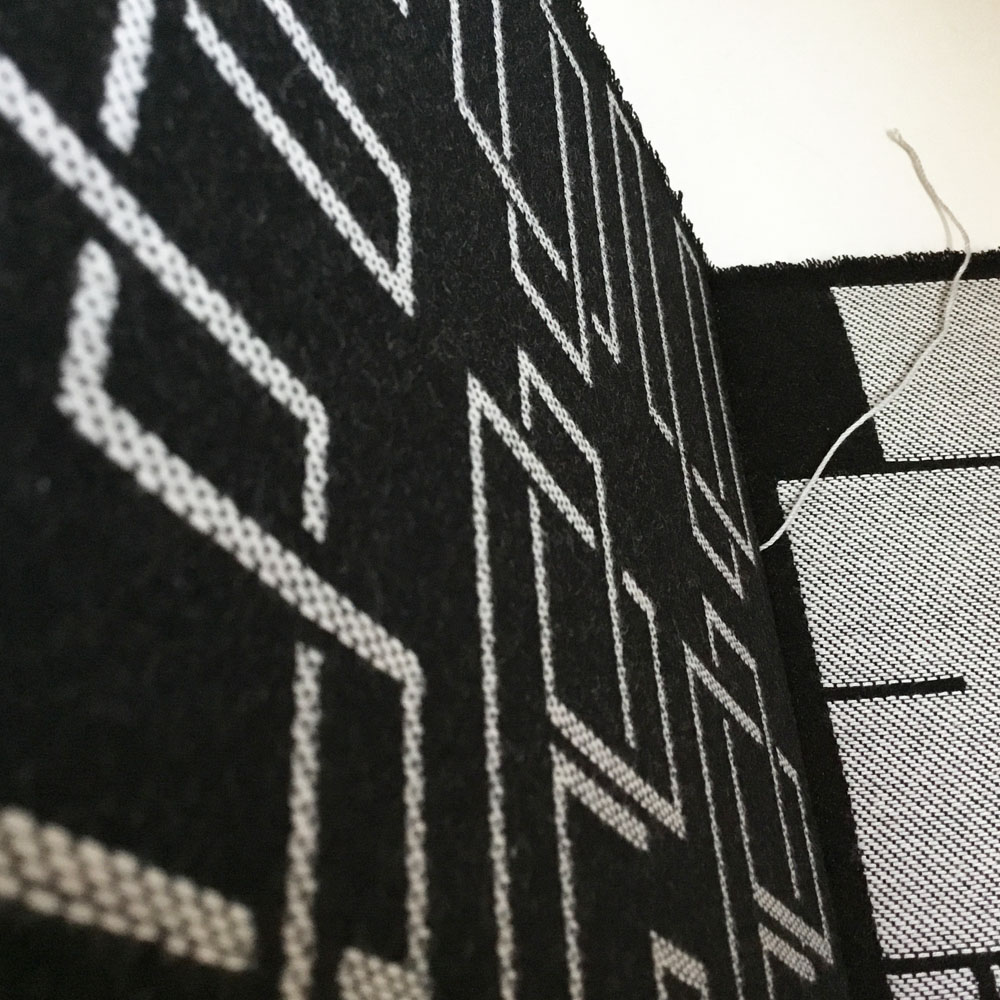
After mounting, the raw edge is hidden in the center fold, and sewn with Japanese four-hole binding (aka Japanese stab bind). In order to hide the final knot inside, I make my first stitch from inside the spine, coming out the front, leaving enough loose thread to tie a knot at the end. 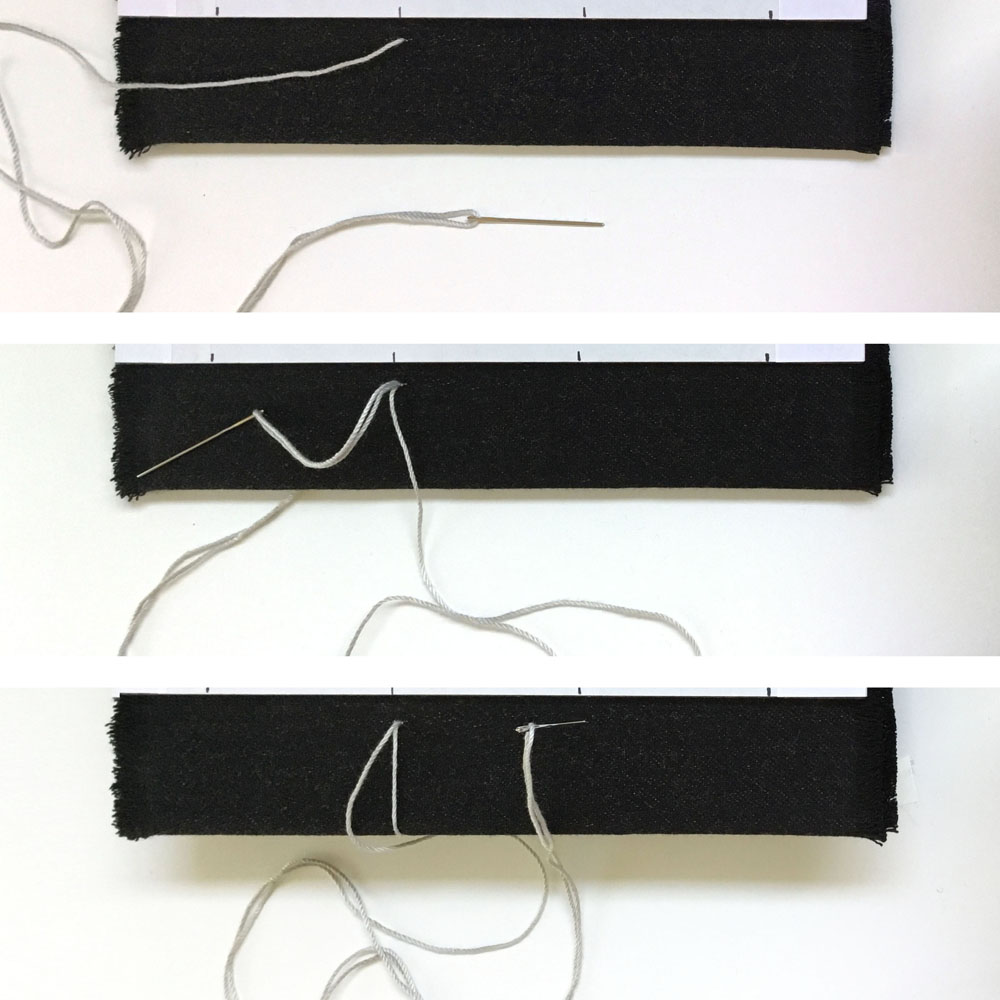
When binding paper, holes are normally punched into the material before threading, but that was not possible with this fabric because the multiple layers of weaving would quickly close up any attempt to make holes. So, I used adhesive markings to guide my stitching instead. 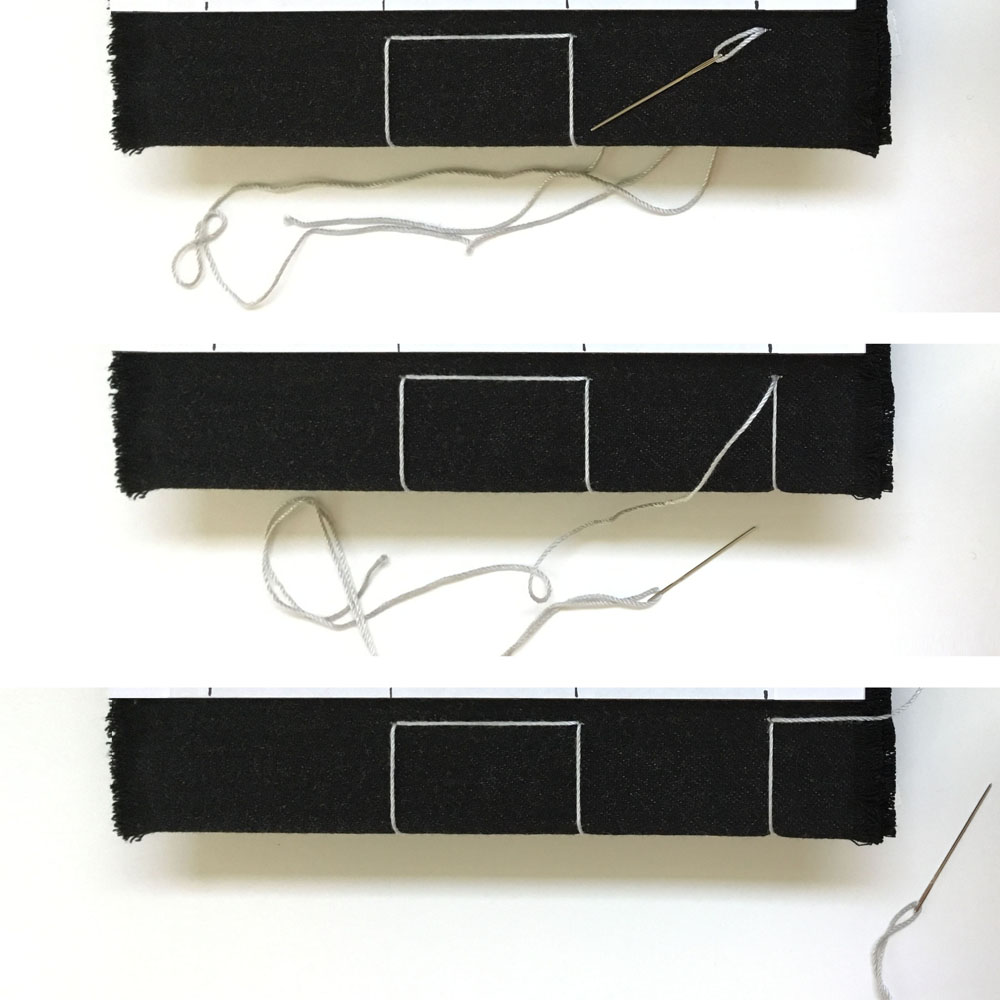
The thread passes through each of the four points three times, from various directions, never overlapping the visible stitching. The path of the thread alternates in over/under fashion in one direction then reverses to join back with the first stitch. 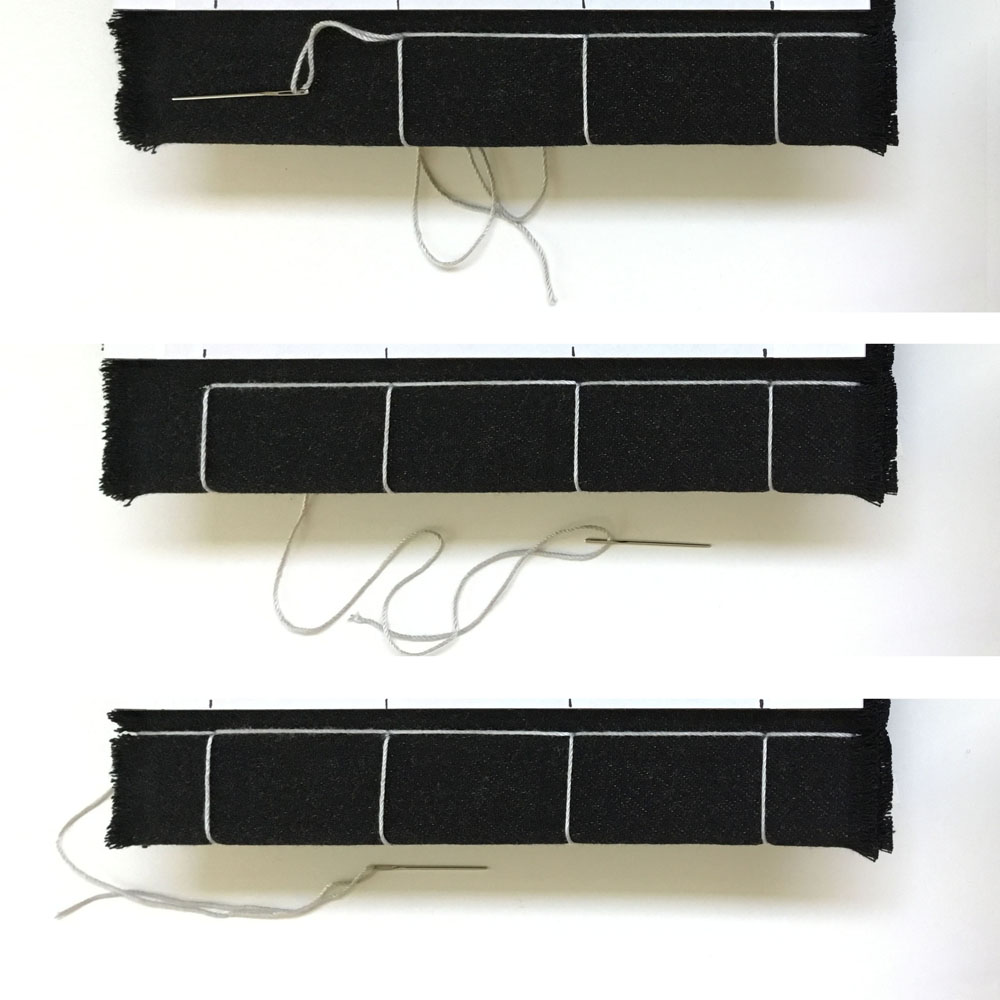
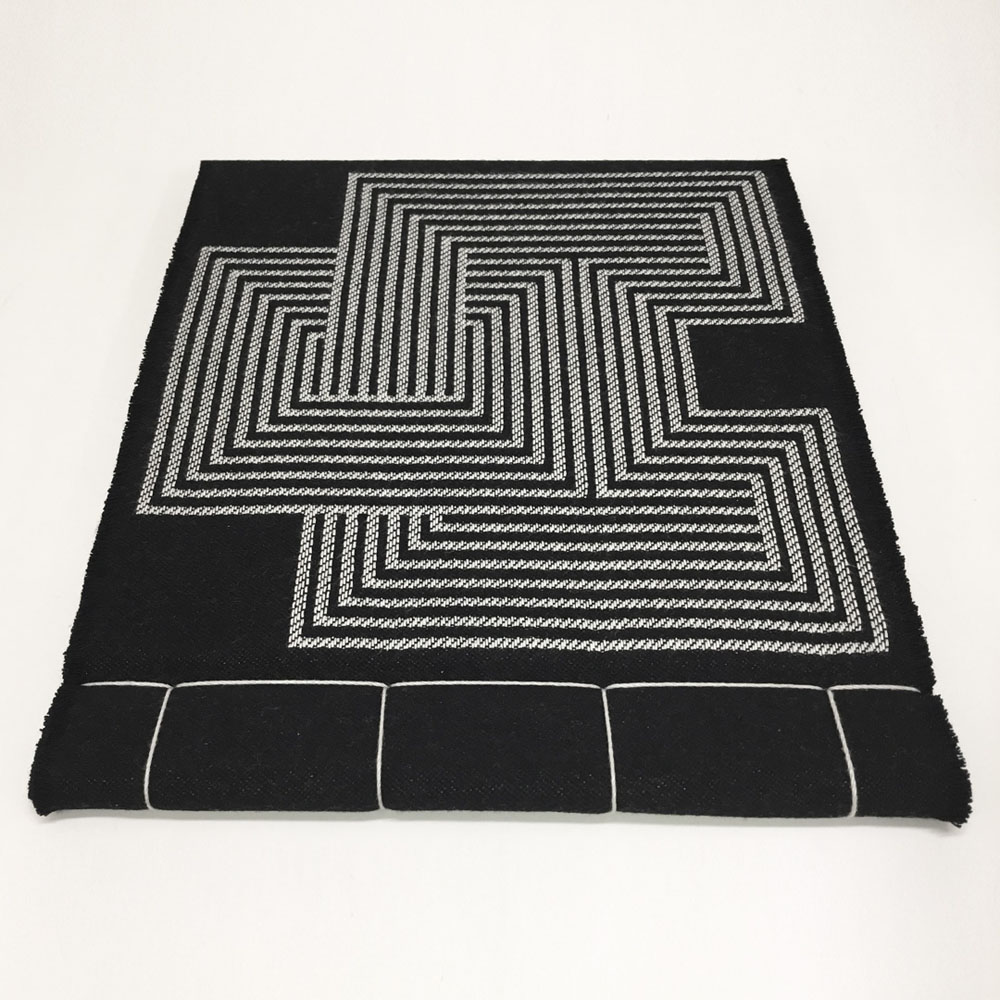
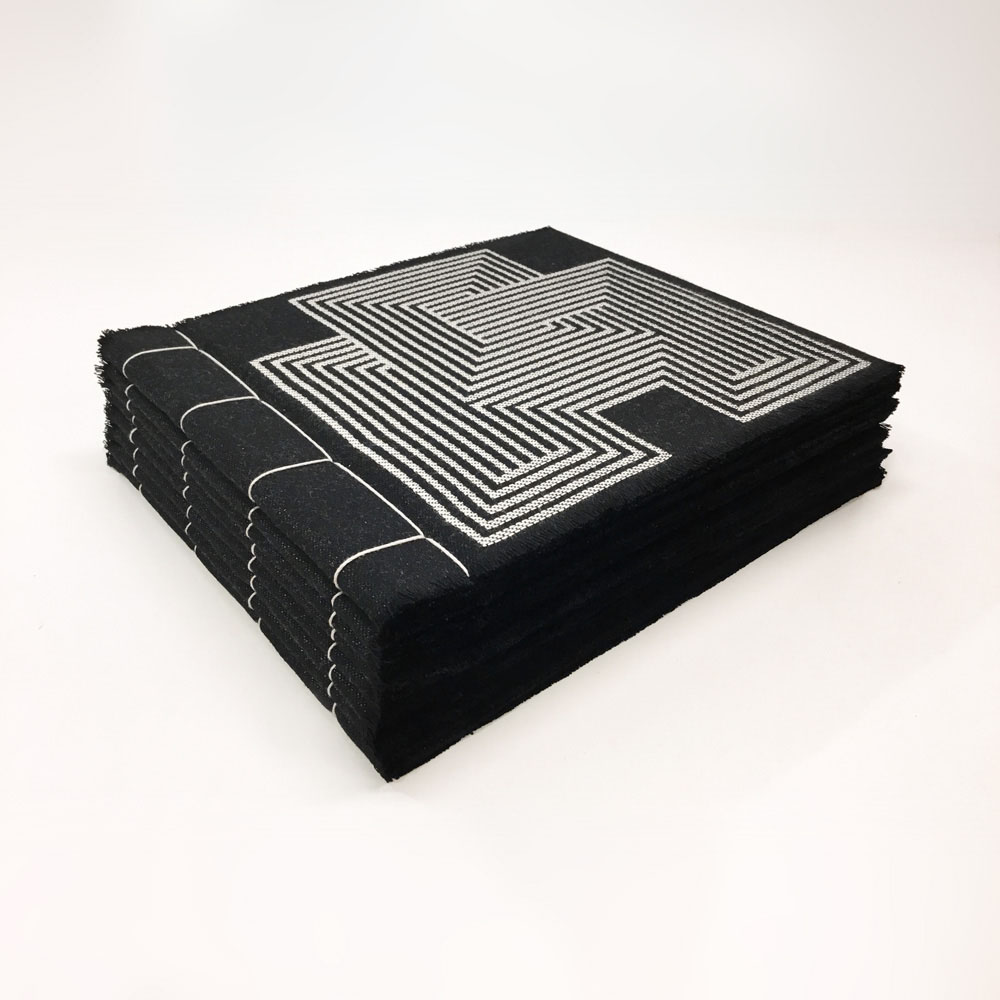
|